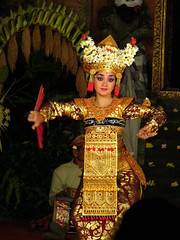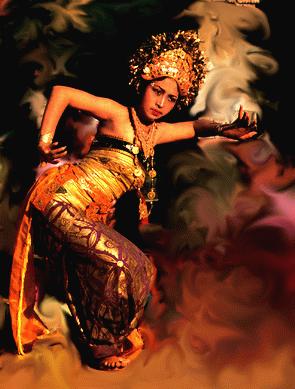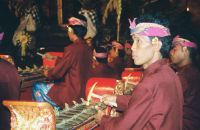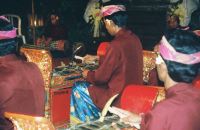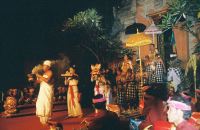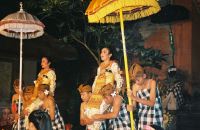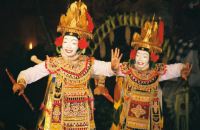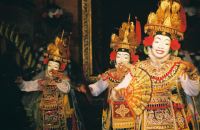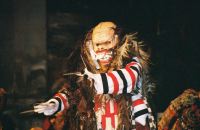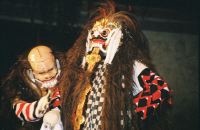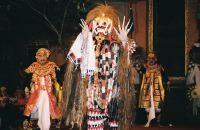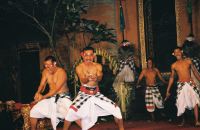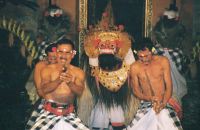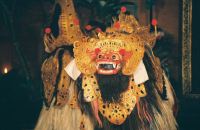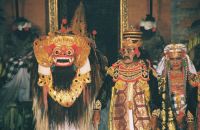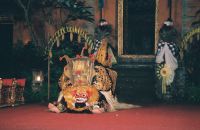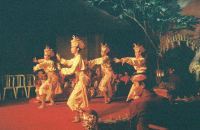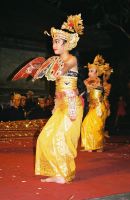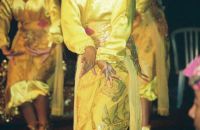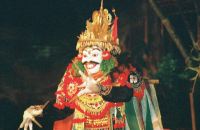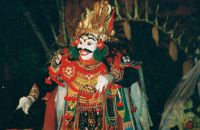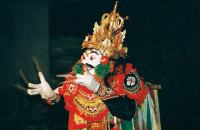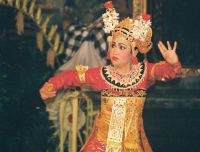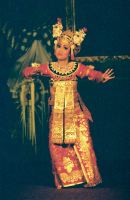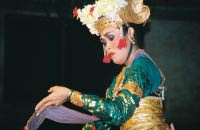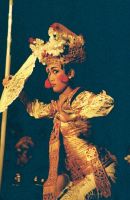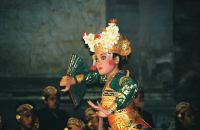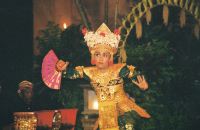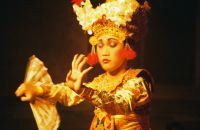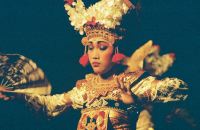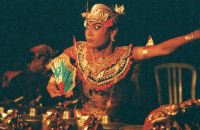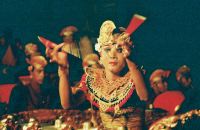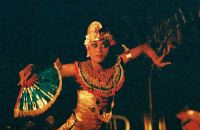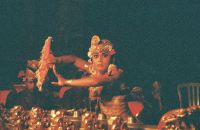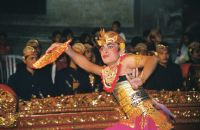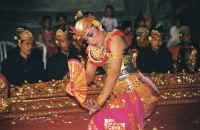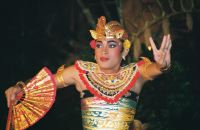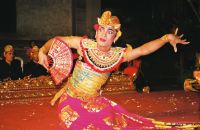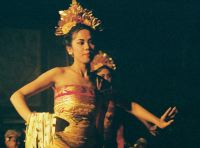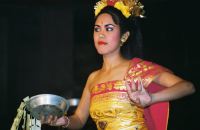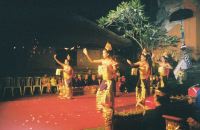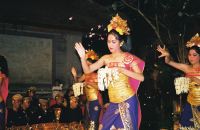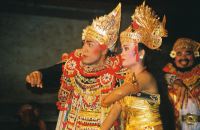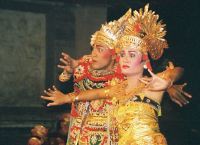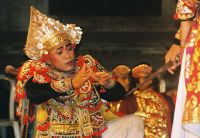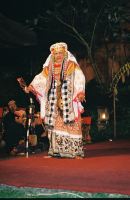Dance is the main art form of Balinese culture and is performed at main temple festivals and ceremonies, especially for the cycle of life and death. Taught and kept in secrecy in villages, halls and palaces, the dances that tourists witness in hotels and specially constructed stages are merely a fraction of the dance scene, although most of the dancers come from village groups.
The Kecak Dance
Its name is derived from the sound "cak", pronounced "chok", which is chanted in complex interlocking patterns that are like the rhythmic patterns played on the gamelan. The modern form of kecak originated from Gianyar village of Bedulu in the 1930s as a result commissioned by the German expatriate artist, Walter Spies. He wished to create a performance that could be enjoyed by a small coterie of expatriate artists like himself, as well as friends and guests to the island.
The modern performance of Kecak is a sensational sight to behold. Hundreds of barechested men sit in a circle with a flickering single oil lamp in the middle. "Cak - Cak - Cak", the chant begins and the men start dancing and swaying to the rhythmic reverberation of their own voices. Hands raised to the sky, bodies shaking in unison, the chorus performs the highly structured piece of vocal music for about an hour. This unique dance holds the title of being the most popular dance in Bali.
The Barong Dance
"Lord of the forest" and magical protector of Balinese villages, the Barong is a mythical, shaggy half-dog, half-lion creature, with a long mane, fantastic fangs, and bulging eyes. It is propelled by two men who maneuver the costume with whimsical and mischievous movements to express its fun-loving nature. The Barong's opponent is Rangda, the evil witch who rules over the spirits of Darkness. The Barong dance epitomizes the eternal struggle between good and evil. The fight of Barong and Rangda is also a topic of traditional narratives performed in temples and takes various forms. The Barong will snap its jaws at the gamelan, prance around a bit, and enjoy the acclaim of its supporters - a group of kris-wielding men. Then ferocious Rangda will then appear lolling her long tongue, baring her threatening fangs, her neck draped with human entrails...not a pretty sight.
The duel begins. Each opponent tries to overcome the other with magical powers but when things do not look too good for the Barong, supporters will lunge at Rangda with krises to weaken or stall her. In retaliation, Rangda would put them all into a trance with her mystical powers and make them stab themselves with their weapons. Fortunately, the Barong possesses magic that is strong enough to cast a spell on the krises from harming the men. This part would be the highlight of the dance; the gamelan rings madly and intensely as the men rush back and forth waving their krises in a frenzy, sometimes even rolling on the ground in a desperate attempt to stab themselves. Often, there seems to be a plot to terrify the audience in the front row! Eventually, Rangda will retire, defeated. And once again, good will reign over evil.
Legong Keraton
The most graceful of Balinese dances, this is the epitome of classical Balinese female dancing. A legong, as the dancer is known, is often a young girl of eight or nine years, rarely older than her early teens. It was first created in the 18th Century and is usually the first dance to be taught to beginners. There are many forms of Legong, the most frequently performed dance being the Legong Keraton or Legong of the Palace.
The story of the Legong is very stylized and symbolic and one should know the story before actually watching the performance. The Legong involves three dancers - two legongs and their 'attendant', the condong. The legongs are identically costumed in gold brocade, which is bound so tightly that it is a mystery such agitated and rapid moves could be made. With elaborately made-up faces, plucked eyebrows that are boldly repainted, and hair decorated with frangipanis, the dancers relate the story with captivating movements.
A king takes the maiden Rangkesari captive. When her brother comes to release her, Rangkesari begs the king to free her rather than go to war. The king refuses and chances upon a bird carrying ill omens on his way to battle. However, he ignores the bird, meets Rangkesari's brother, and was thus killed in the fight.
The roles of the dancers may change according to the narration. However, the dance usually begins with the king's preparations for battle and ends with the bird's appearance.
Baris
A male equivalent of the Legong, Baris is a warrior's dance. Executed with energetic and warlike martial spirit, the Baris dancer has to convey the thoughts and emotions of a warrior preparing for action as well as confronting an enemy in battle. This dance is performed solo and requires great energy, spirit and skill. The warrior's changing moods have to be displayed through facial expressions and movements; he should be able to depict chivalry, pride, anger, prowess, and a little regret. Baris is said to be one of the most complex of all Balinese dances.

 The Oasis Benoa is a modern boutique resort situated in on the white sandy beach of Tanjung Benoa, southern coast of Bali. It is blessed with a magnificent view of the blue ocean with warm and calm seawater. The sunrise is one of the spectacular view and hotel features with soft tropical atmosphere flow to the entire hotel area. The Oasis Benoa is just 30 minutes drives from Bali's International Airport to the south part of Bali.
The Oasis Benoa is a modern boutique resort situated in on the white sandy beach of Tanjung Benoa, southern coast of Bali. It is blessed with a magnificent view of the blue ocean with warm and calm seawater. The sunrise is one of the spectacular view and hotel features with soft tropical atmosphere flow to the entire hotel area. The Oasis Benoa is just 30 minutes drives from Bali's International Airport to the south part of Bali. 























